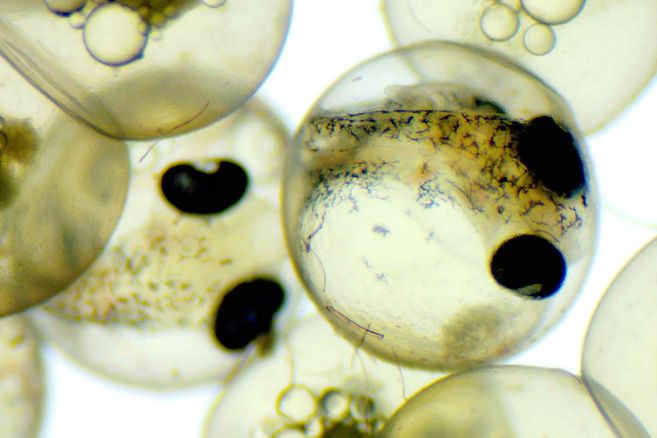

Institut für
FI Fischereiökologie
M.Sc. Katharina Straumer

Tünen-Institut für Fischereiökologie
Herwigstraße 3127572 Bremerhaven
Mitarbeiterin bis 31.01.2021
Expertise
- Krankheiten und Parasiten von Fischen aus der Ostsee
- Leberhistopathologie bei Fischen
- Biologische Schadstoffeffekte
Projekte
Beteiligt an
laufende Projekte
abgeschlossene Projekte
Publikationen
- 0
Kammann UKR, Aust M-O, Siegmund M, Schmidt N, Straumer K, Lang T (2022) Mercury and explosive compound 4-aminodinitrotoluene (4-ADNT) in dab (Limanda limanda) caught at munition dumping site Kolberger Heide in the Kiel Bight, Baltic Sea [Datenpublikation] [online]. Bremerhaven: PANGAEA, zu finden in <https://doi.org/10.1594/PANGAEA.949114> [zitiert am 27.10.2022], DOI:10.1594/PANGAEA.949114
- 1
Kammann UKR, Straumer K, Koske D, Scharsack JP (2021) DAIMON2: Decision aid for marine munitions - practical application. Bremerhaven: Thünen Institute of Fisheries Ecology, 1 p, Project Brief Thünen Inst 2021/18a, DOI:10.3220/PB1623067464000
- 2
Kammann UKR, Straumer K, Koske D, Scharsack JP (2021) DAIMON2: Entscheidungshilfe für Munition im Meer - Praktische Anwendung. Bremerhaven: Thünen-Institut für Fischereiökologie, 1 p, Project Brief Thünen Inst 2021/18, DOI:10.3220/PB1623067095000
- 3
Kammann UKR, Aust M-O, Siegmund M, Schmidt N, Straumer K, Lang T (2021) Deep impact? Is mercury in dab (Limanda limanda) a marker for dumped munition? Results from munition dump site Kolberger Heide (Baltic Sea). Environ Monit Assessm 193:788, DOI:10.1007/s10661-021-09564-3
- 4
Scharsack JP, Koske D, Straumer K, Kammann UKR (2021) Effects of climate change on marine dumped munitions and possible consequence for inhabiting biota. Environ Sci Europe 33:102, DOI:10.1186/s12302-021-00537-4




